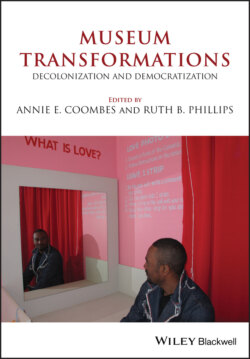Читать книгу Museum Transformations - Группа авторов - Страница 35
An underground location
ОглавлениеThe 1999 Bundestag resolution added to the memorial an “Information Center referring to the commemorated victims and the historical sites of remembrance.” This was a twofold compromise between, on the one hand, those who favored a house of remembrance with archives, library, and museum in combination with a smaller memorial and, on the other hand, supporters of a pure memorial with no or very little additional information. The fact that Michael Naumann (the newly established State Minister of Cultural Affairs) strongly emphasized the need to educate rather than simply to represent the Holocaust with an abstract sculpture, gathered considerable support among many people. Consequently, the Bundestag decision deliberately did not mention a Holocaust museum, but allowed for an information center on the victims of the Holocaust. The formal resolution produced by the Bundestag tried to incorporate within the concept the original historic sites where killings had taken place and to make sure that existing memorials in Berlin and other places would not be neglected as a result of a centralized national memorial (Carrier 2005, 122). However, the task of turning these concessions into a meaningful form and of developing an effective exhibition presented great challenges to all those involved. The first of these was the question of where the center was to be situated in relation to the memorial. This also touched on the relationship between the integrity of the artists’ concept for the memorial and the necessity of educating the public about the Holocaust. The decision of the Kuratorium to locate it underground was largely the result of Peter Eisenman’s wish to “effectively minimize any disturbance to the memorial’s field of pillars” (2005b, 11). For Eisenman, who was long opposed to the idea of an information center, it was clearly subordinate to the memorial. The center was not to draw visitors away from the memorial and, at the same time, it had to be integrated into the artist’s overall concept. The architect Salomon Korn, one of the representatives of the Central Council of Jews in Germany in the Kuratorium and chair of the Frankfurt Jewish Community, also advocated the construction of the center underground. However, this was not intended as a spatial demonstration of the center’s “subordination” but rather to secure its status as an integral part of the memorial that should not be isolated from the memorial nor artistically and formally regarded as an alien element. Korn anticipated that a building above ground would have competed with the memorial, which means that it could only have lost. The specific nature of Eisenman’s great design, its “lack of direction, missing axiality, regularity, and ubiquity” [“Richtungslosigkeit, fehlende Axialität, Gleichmäßigkeit und Ubiquität”] would have been disturbed by a building on its premises, irrespective of its location; visitors would hardly have noticed an intentionally small and neutral edifice “due to its lack of significance and selfevidence” (Salomon Korn, submission to the meeting of the Kuratorium on February 24, 2000, Archives of the Foundation Memorial to the Murdered Jews of Europe, Berlin). Korn’s plea for subterranean construction could thus be understood as a plea in favor of the center. It was also Salomon Korn who, through his active participation in the working group Design, which had been established by the Kuratorium in January 2001, contributed significantly to the center’s successful realization when negotiations between the historians and exhibition designers involved in the process reached a stalemate.
